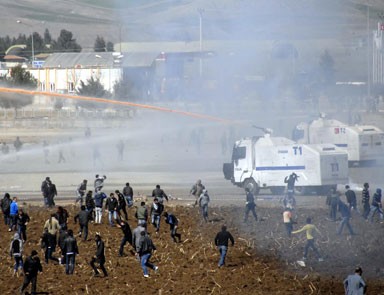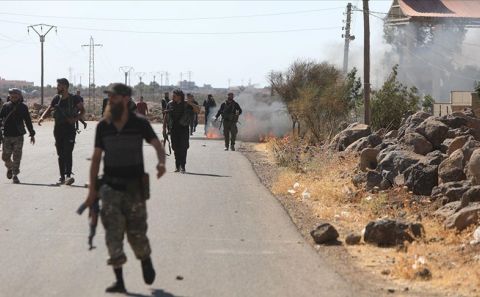Last several years LNG market demonstrated unprecedented scale, and it continues to grow. New players are coming, as from suppliers' side, as well as buyers' side. In this material, we are trying to recognise demand and supply for natural gas in the Middle East and South Asian regions.
Last several years LNG market demonstrated unprecedented scale, and it continues to grow. New players are coming, as from suppliers’ side, as well as buyers’ side. In this material, we are trying to recognise demand and supply for natural gas in the Middle East and South Asian regions.
To be more precise, India and Pakistan as the main buyers, Qatar and Iran as the main natural gas producers of the considering region.
Does appetite increase?
At the moment, with the growth of economies of countries with a total population of almost two billion people, their energy needs, respectively, are also increasing. So according to the latest BP report, India's primary energy consumption reached 724 million tons of oil equivalent. Ten years ago, the country consumed just over half of this figure. Pakistan's figures are more modest, but still high, and in 2016 it consumed 83.2 million tons of oil equivalent, which is 1.5 times higher than consumption in 2006. At the same time, the Governments of both countries are trying to artificially limit the growth of consumption, and in the cities, even in capitals, there are prolonged outages of electricity. In winter, everything that burns and gives heat is burned in the cities. In addition to this, both countries experience colossal environmental difficulties and the development of the market for classical types of energy resources can further exacerbate an already deplorable situation.
Recipe: natural gas
As known, natural gas is the most environmentally friendly of all available hydrocarbons. With the increase in the capacity of the LNG market, both India and Pakistan are turning their attention to buying large and long-term volumes of liquefied natural gas, increasing their share in exports from Qatar. Over the past few years, both countries have signed major contracts for the supply of natural gas from Qatar, thereby reducing the difference between supply and demand. It should be noted that if you look at BP's report, the difference between supply and demand in energy resources in these countries are not that big. But this is only a visible part of the problem, the so-called tip of the iceberg. If we look at this problem deeper, it turns out that the majority of the population of these countries lack access to basic conditions, including electricity and heat, as well as plants and factories that still use primitive fuels or do not use them at all. Thus, India and Pakistan have a huge shortage of energy resources.
But here it is necessary to note that the governments of both countries are carrying out huge work to saturate the market. In addition to contracts for Qatari gas, negotiations are under way with other major suppliers such as Australia, Malaysia and Russia. Gas pipeline projects are also on the agenda, which enjoy variable success. Two countries are considered as potential suppliers of natural gas: Iran and Turkmenistan. Both directions originate from the nineties of the last century, and for a number of reasons have not been implemented to this day. The IPI project was eventually frozen by Pakistan because of the sanctions of some countries against Iran. Trans-Afghan gas pipeline from another gas reach Turkmenistan, or TAPI, was also postponed due to the situation in Afghanistan, but recently the project participant countries are actively promoting it. Recently, with the initiative of Iran and support of Russia, the possibilities of laying on the bottom of the Arabian Sea are being studied.
Possibilities of the world's largest deposit
This article is not in vain devoted to the Middle East. More than 40% of the world's proven natural gas reserves are located here, and one-third of the total reserves belong to Iran and Qatar, respectively, the majority is concentrated in the North Dome / South Pars deposit. This deposit is the largest field in the world with total reserves of 28 trillion cubic meters, which was discovered in 1971, production started in 1991. At present, according to statements of operators, daily production reaches 1.5 billion cubic meters, as a result, 550 billion cubic meters annually. Given that the beginning of production in 1990’s, the intensive production of the field already makes itself felt. This is evident in the pressure drop. According to a simple hydraulic calculation, it can be assumed that the pressure drop in this field is at least 20%. This process is normal in hydrocarbons production, and depend on the production, it is necessary to construct booster-compressor stations or additional wells. So, according to the statement of the head of the South Pars gas company’s operator, Iran needs to invest 25 billion US dollars, to avoid a loss in the volume of production due to the pressure drop. If, in the case of Qatar, the attraction of such investments is relatively easy, for Iran foreign investments can be available to a limited extent, due to the validity of the sanctions of some countries. In addition, since most of the produced gas in Iran is consumed domestically, the export amount can remain in Iran, in a pessimistic outflow of circumstances, gas imports to Iran may increase.
Where to make up the increasing demand?
As we said at the beginning, there are other opportunities for supply diversification, such as increased opportunities for LNG production from other countries and pipeline projects.
For this, the considered in this article two large gas consumers will need to make a lot of effort. Re-detailed study of the LNG market, analysis of the potentials of new players. Also, Pakistan and India will have to make efforts to eliminate existing issues (both among themselves and the situation in Afghanistan) and accelerate the construction of the TAPI gas pipeline and other pipeline projects.
In any case, it is obvious that to ensure the growth of the economies of India and Pakistan, they need energy to make up the increasing demand.





































